Achieving Thick Moisturized Twists: Products, and Techniques You Need to Know
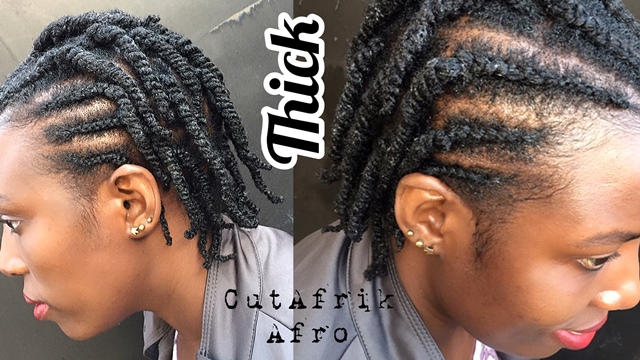
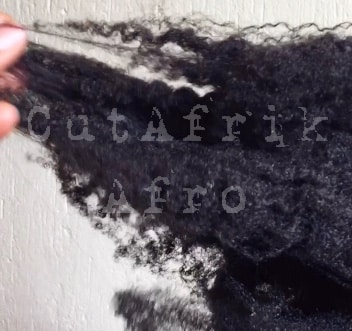
What is the benefit of have long frayed hair when you could achieve short thick moisturized twists.
Caring for natural hair at home can seem overwhelming and time-consuming butt let’s make this simple. Just know in the back of your mind you often need these three things to maintain healthy hair; clarifying, conditioning, and mini twist protective styling. That’s my go to and my hair is liking it.
Well, once in a while we have to go an extra mile just the way we do with cleaning our homes. We always have a routine house cleaning but once in a while, (once, twice a month or twice a year) we do a general cleaning where we wipe windows, mirrors and other surfaces, vacuum or dry clean carpets. So it is also with hair. Depending on the condition of our hair after about 2 weeks, a month or more, we want to do not just a routine regular conditioning but a deep conditioning and or a protein treatment.
Is that too much to ask?
What is a conditioner, a deep conditioner and a protein treatment? This article is going to help us know the difference, when to use what and how. Basically a guide to healthy thick moisturized twists and hair.
Clarifying removes all the dirt and allows room for moisture and nutrients.
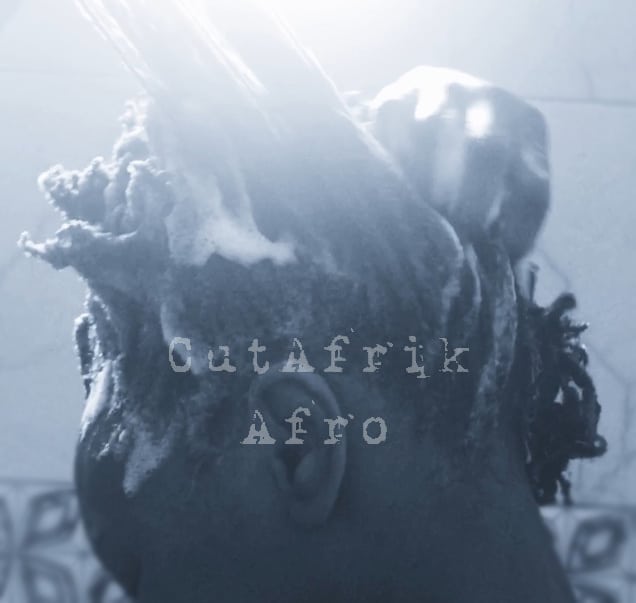
Cleansing helps improve the feel, appearance, and manageability of hair. Raw oils and raw kinds of butter is my lifestyle. So this requires me to clarify at least once a month (use a clarifying shampoo).
You don’t have to clarify so often. You may use a moisturizing shampoo in the middle there. Clarifying is key when you have accumulated a lot of product build-up or have been in braids, and extensions for a good period. Properly cleansed hair will allow moisture in and other nutrients you would love to add to hair.
Typically I clarify my hair twice or once a month depending on the condition of my hair. Clarifying hair too often might lead to excessive dryness which we are trying to avoid. So balance sis. Please balance between clarifying shampoos and moisturizing shampoos.
Scalp massage increases blood circulation to promote rejuvenation and hair growth
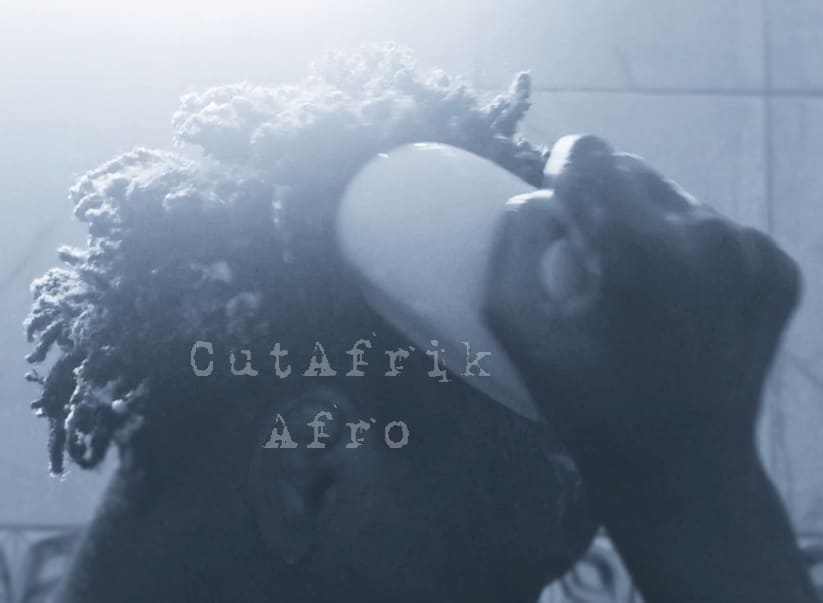
When clarifying, it would be even more effective to apply this technique, scalp massage. It is believed that blood flow helps to grow hair. Using your fingers, gently put pressure and light motions to immediately increase circulation to promote growth and rejuvenation. This will also exfoliate the stubborn debris on your scalp. You may opt for a Scalp Massaging Shampoo Brush to make your work even better.
*You might do a scalp massage every wash day and see what happens.
Conditioning
A regular conditioner
The main difference between a regular conditioner and a deep conditioner is the level of conditioning they provide. While both types of conditioners are designed to moisturize and soften the hair, a deep conditioner is formulated to provide a more intensive conditioning treatment.
Regular conditioners are typically used on a daily basis and are designed to provide basic conditioning to the hair. They work by coating the surface of the hair shaft with a thin layer of conditioning agents that help to smooth the cuticle and improve the hair’s texture and appearance. Regular conditioners usually contain lighter ingredients, such as cetyl alcohol, which helps to make the hair feel soft and smooth without weighing it down.
Deep conditioners, on the other hand, are formulated with more concentrated and nourishing ingredients that can penetrate the hair shaft more deeply, providing a more intensive conditioning treatment. They are usually used less frequently than regular conditioners, typically once a week or every two weeks. Deep conditioners often contain richer and heavier ingredients, such as shea butter, natural oils, and proteins, that can help to strengthen, moisturize, and repair the hair.
Overall, while both regular and deep conditioners provide conditioning benefits to the hair, a deep conditioner is more concentrated and provides a more intense and nourishing treatment for dry, damaged, or frizzy hair.
Regular Conditioning Home Recipe that I use
Rice water is my major regular conditioner. It has been used for centuries as a natural hair treatment in some cultures, and there is evidence to suggest it has benefits for the hair. Rice water is the starchy liquid that is left over after soaking or boiling rice. It is rich in vitamins, minerals, and antioxidants that can help to nourish and strengthen the hair.
When used as a regular conditioner, rice water can help to detangle the hair, improve the hair’s texture, and make it feel softer and smoother (improves hair’s elasticity). The nutrients in rice water, such as inositol, amino acids, and vitamins B and E, can also help to repair and protect the hair from damage caused by heat styling, chemical treatments, and environmental stressors.
To use rice water as a regular conditioner, you can apply it to your hair after shampooing and leave it on for 3 to 5 minutes before rinsing it out. You can also use it as a leave-in treatment.
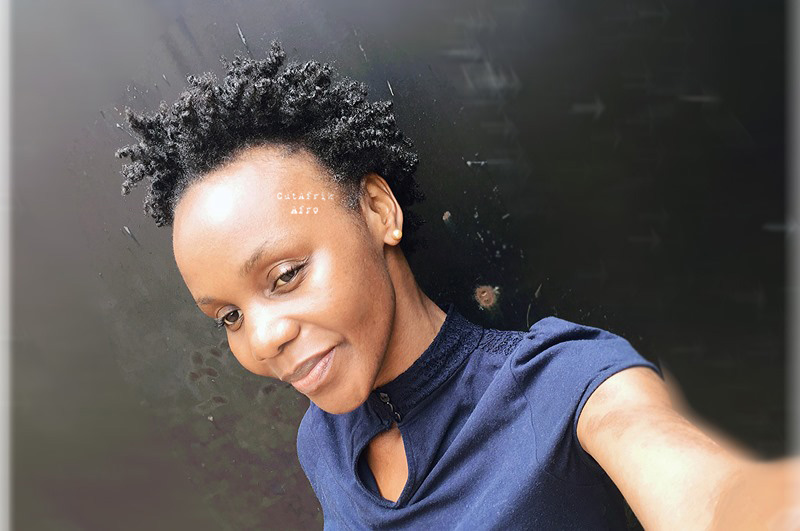
It’s important to note that while rice water can have benefits for the hair, it may not be suitable for everyone. Some people may experience allergic reactions to rice water. So may opt for aloe vera, flax seed or okra gel as a regular conditioner.
This video right below here demonstrates how I use rice water to condition.
Deep conditioning treatment to maximize moisture and nourishment
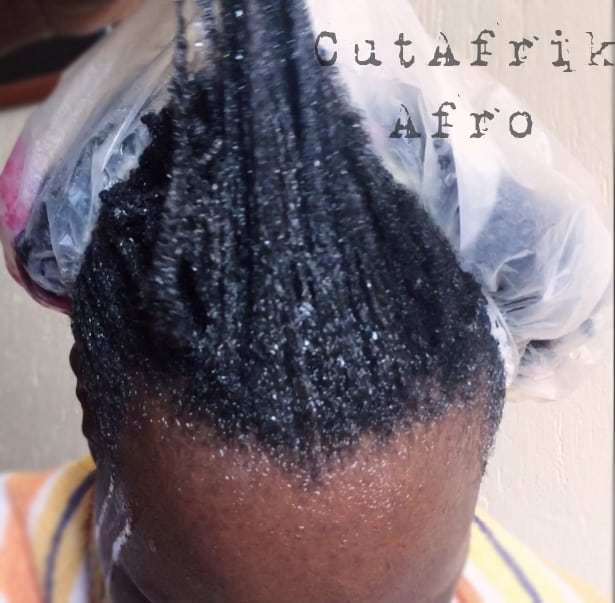
Deep conditioners contain higher concentrations of emollient and humectant ingredients than daily conditioners and usually we use steam or moist heat for about 15 to 30 minutes to encourage the penetration of the formula. A deep conditioner is a thicker hair treatment that is designed to provide extra moisture and hydration to the hair. It is typically used to help improve the texture and appearance of dry, damaged, or frizzy hair. Deep conditioners often contain a variety of ingredients, such as, humectants, natural oils, and botanical extracts, that help to nourish and moisturize the hair. They may also contain protein, but it is typically in a lower concentration than a protein treatment.
This deeper penetration allows the nourishing ingredients in the deep conditioner to continue working on the hair for days after use than surface-smoothing daily conditioners.
How often you should deep condition really depends on the condition of your hair, your hair texture, and how often you wash and heat style it or color your hair.
Once a week is a good routine for some people as Mraz Robinson says using it too frequently could lead to product buildup. It may even lead to moisture overload where the hair becomes gummy and limb. Most people with afro hair do it after every two weeks or once a month. This is the case for me too.
Deep Conditioning Home Recipe that I use
Below is my major deep conditioning recipe that I have used on my hair and others’.
DIY deep conditioner of okra or aloe vera, rice water or honey, egg yolk or gelatin and oils. I concentrate it more with the humectants for more hydration than the protein.
Okra is made up of close to 93 percent water, along with the protein that’s in it, can serve as a great Conditioner.

Okra is rich in nutrients that contribute to healthy hair. Vitamin C helps it produce more collagen which increases elasticity and reduces hair loss. Magnesium works to dissolve calcium deposits that can occur from hard water. Iron helps to increase blood circulation so that hair follicles can receive the vitamins and minerals that it needs.

Okra and rice water help keep scalp healthy by reducing itchiness and irritation.
I cut 5 pieces of okra into smaller pieces, add about a quarter liter of hot rice water and let it soak for about 15 minutes, then sieve, and the result? A greenish, thick slimy (gel) liquid that now acts as a conditioner.
Rice Water
Rice water promotes elasticity, increases volume, tames frizz, protects hair from damage, cures dandruff, and gives you silky hair. If you’re lazy to prepare rice water, you could use honey instead
Honey is known to have moisturizing benefits for both hair and scalp, provide shine, soften natural hair, and reduce frizz. It’s a scalp treatment that cleans and alleviates conditions such as dandruff and dermatitis. Using honey on your hair for an extended period however, may bleach your hair.
Gelatin
Gelatin can easily be got at the grocery store. It’s a hydrolyzed protein that penetrates hair cuticles and coats to make hair smoother and stronger, preventing moisture lose. When making a hydrating conditioner, you want to use less of the protein. If you can not access gelatin, use an egg yolk.
The protein in eggs (egg yolk) are too large to fit into the hair shaft and bond properly but they still nourish by coating to protect hair and provide shine. It’s high in fat called lecithin that leads to moisturized and soft hair. The combination of vitamins A and E, biotin, and folate are just some of the nutrients that researchers have linked to hair growth and healthy hair

So I follow by adding 1 to 3 teaspoons of gelatin of less than a quarter liter of hot water, stir and let it soak in the okra gel for about 5 minutes or so to dissolve well. You may add a few drops of your favorite essential oils like mint to help with maximum penetration, and also your favorite carrier oils like coconut oil. But remember you want to hydrate your hair, so concentrate the mixture more with humectants like okra or aloe vera, and honey or glycerin. What you get is a beautiful deep-conditioning treatment paste.
*The gelatin soaks better in hot water.
Go ahead and apply this paste to clean damp hair, wear a plastic cap and sit under a hooded dryer for an even round heat about 15 minutes. The heat is going to open up the cuticles of the hair which in turn will allow more moisture and or protein into the strands. The heat maximizes penetration of the conditioning treatment. This is what we would call deep conditioning treatment.
If you don’t own a hooded dryer, grab your towel, get it damp and put it in a microwave for just a few seconds to warm it up and wrap your hair around with the towel, let it sit there for about 20 minutes, take the towel down and the let cool for about a good 10 minutes, then rinse with cool water to close the cuticles and lock in all those good ingredients so you see the benefits even longer term. You will see a massive difference in the hair. I bought the idea from a dermatologist called at GlamFam Hair & Beauty.
*You can try a deep conditioning treatment every 2 weeks or once a month and see how your hair responds.
Protein treatment mask
*Eggs and mayonnaise are a popular treatment that many mistakenly think will give their hair proteins. But unfortunately they won’t because the protein in eggs are too large to fit into the hair shaft and bond properly. They have to go through hydrolysis where the proteins undergo a chemical breakdown into smaller compounds enough to fill into the cracks of your hair’s shaft.
A protein treatment is specifically designed to strengthen and repair the hair. Protein treatments contain a high concentration of protein, such as keratin or hydrolyzed wheat protein, which helps rebuild the hair’s structure and prevent breakage.
Who need proteins? According to a dermatologist, @Curlchemistry, if your hair is mushy, does not spring back after pulling it, and you are experiencing a lot of breakage, then you need a protein treatment. Healthy hair should spring right back. Hair may be damaged or weakened from chemical treatments like coloring, heat styling, or other types of environmental stressors.
*Protein should be used once a month or in two months since it may cause brittleness. Follow with a deep moisturizing conditioner to encourage soft and smooth hair.
So while both deep conditioners and protein treatments can help to improve the health and appearance of the hair, a deep conditioner is focused on providing extra moisture and hydration, while a protein treatment is focused on providing extra strength and repair. It is important to choose the right treatment based on your hair’s needs and condition.
Cut the split ends to prevent breakage and allow room for healthy hair.

Most folks might think cutting split ends means getting rid of the beautiful length they have already. But there are great benefits to trimming your hair often. Cutting off your split ends prevents breakage and allows room for healthy hair to grow out. You actually realize a thick appearance immediately. What is the use of having long hair when it looks frayed, unhealthy.
The two-strand method is one of the easiest ways to spot split ends. Brush each section smoothly and twist the hair tightly. Cut the ends of the twists that are abnormally thinning. You may do this two to three times a year or, as long as you see ends that are making your hair look sick you just know what to do. You won’t regret it.
*Use professional haircutting shears only to trim.
Twist Protective Styling
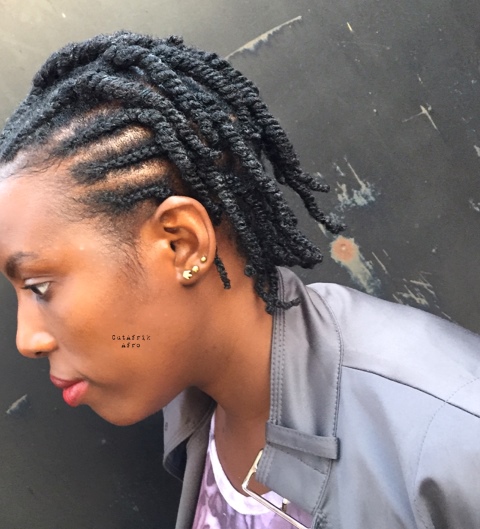
This style works almost for any hair length, takes short time to style, and requires minimal manipulation. Yes, the two-strand or three-strand twist is protective, because it is a low-manipulation hairstyle since you don’t need to do much.
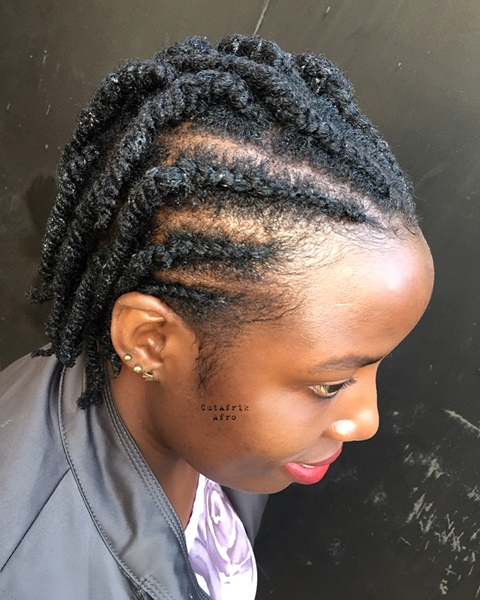
When it comes to whether or not you should twist on wet or dry hair, think about the look you’re going for. When you twist on dry hair, you will get a more polished and stretched look, whereas, twisting on wet hair will look shrunken.
After wearing your twists for a week or two or even three, you can always take it down to achieve twist-outs which is another great hairstyle.
With the above conditioning treatment, you are sure your twists will remain moisturized for over a month without adding moisture.
Twist Maintenance
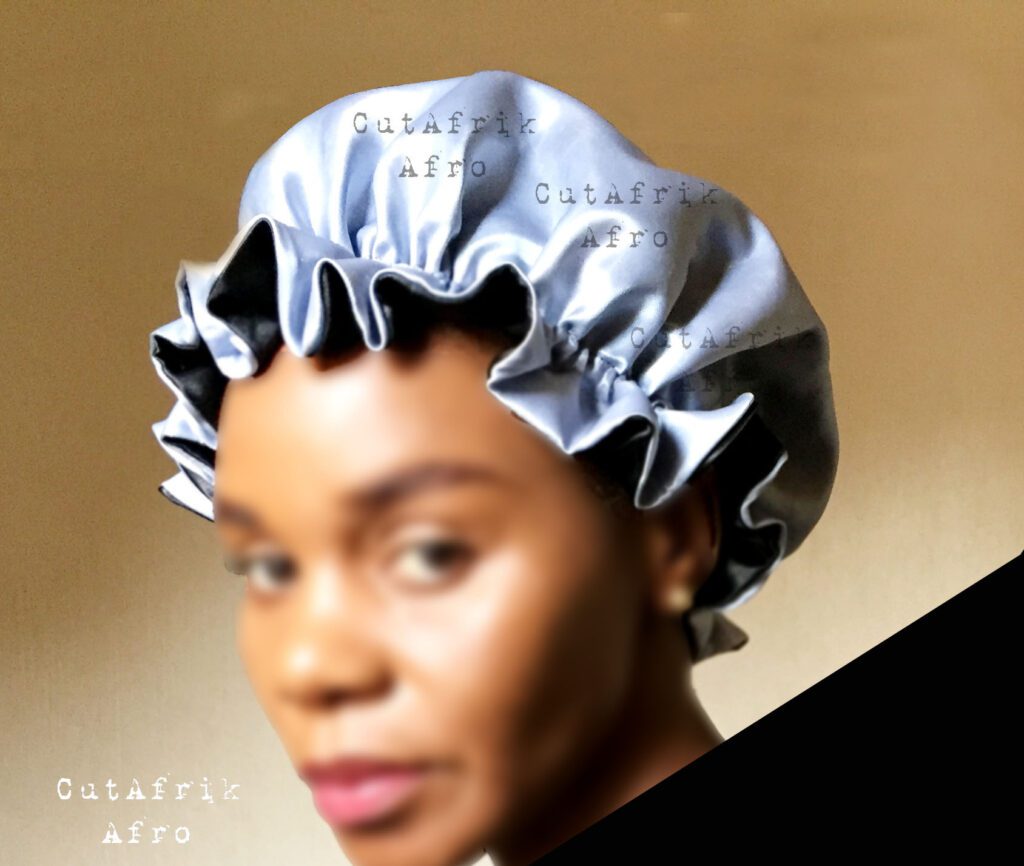
To prolong the smooth look of your twists, you should always go to bed with a satin bonnet or a silk scarf. This prevents the friction between hair and cotton absorbing materials hence keeping hair moisturized longer and preventing frizz.
Some prefer to wear a scarf for their hair to stay in one place and not move around so much while asleep.
I minimize how often I moisturize my hair because water temporarily expands hair and then shrinks it as water evaporates from your hair. The expansion and shrinkage will eventually lead to frizz. But if you have to moisturize, use a water-best hairspray that doesn’t require rubbing the products on your hair as a cream-based moisturizer does, or simply mist hair with some water in a spray bottle. Little goes a long way.
*Washing your hair while it’s in two-strand twists may cause it to frizz up, tangle, and start to turn into locs after you wash it. So you choose.
You may try using dry shampoo instead massaging the scalp gently so that you don’t disturb the twists.
Twist Out
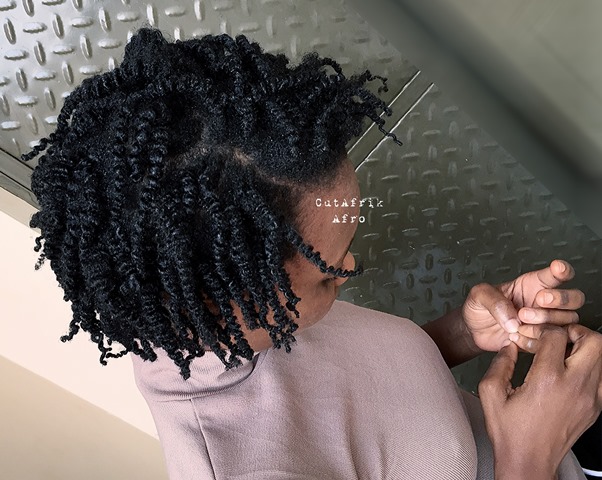
A Twist out is another hairstyle you could enjoy in your natural hair just before you cleanse. Using oily hands(fingers), gently separate the twists. If you like bigger / fluffier hair, you could gently separate each strand further until your hair is as big as you want it. To separate each strand further, I usually pull it so it helps me see where it naturally separates. Doing it this way will minimize unnecessary frizz. Note that the more you separate, the more likely you’ll get frizz. Still, I love some measure of frizz so that my hair looks bigger and more natural. You choose.

Watch complete video for this tutorial


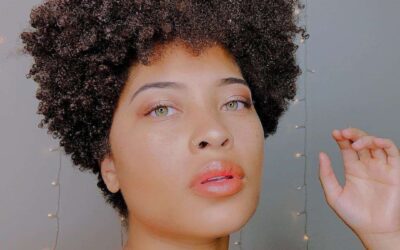
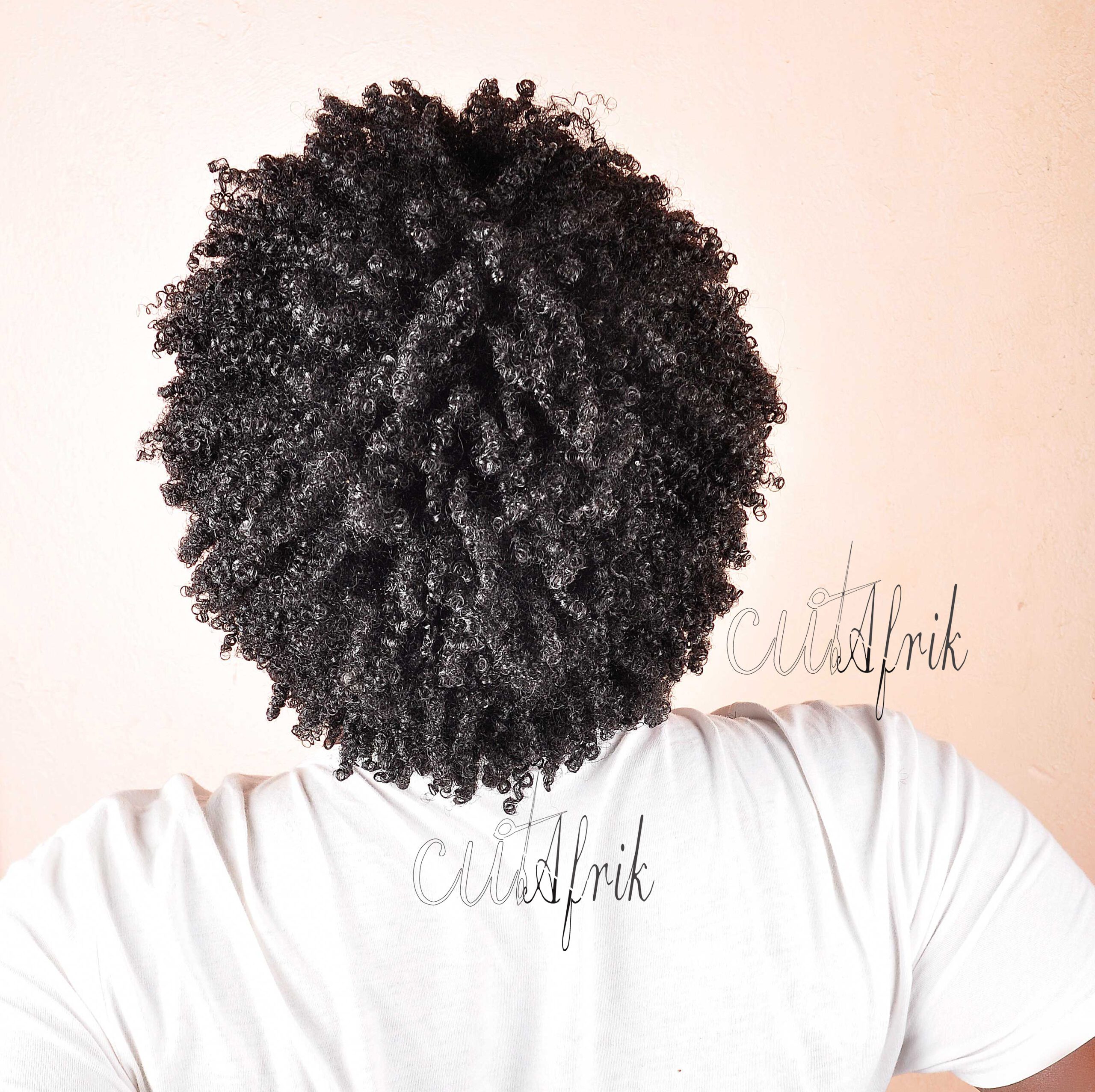

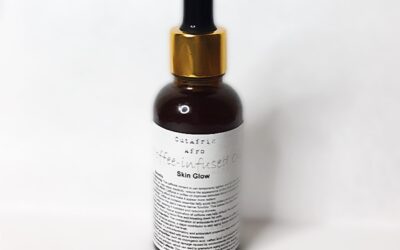

Recent Comments